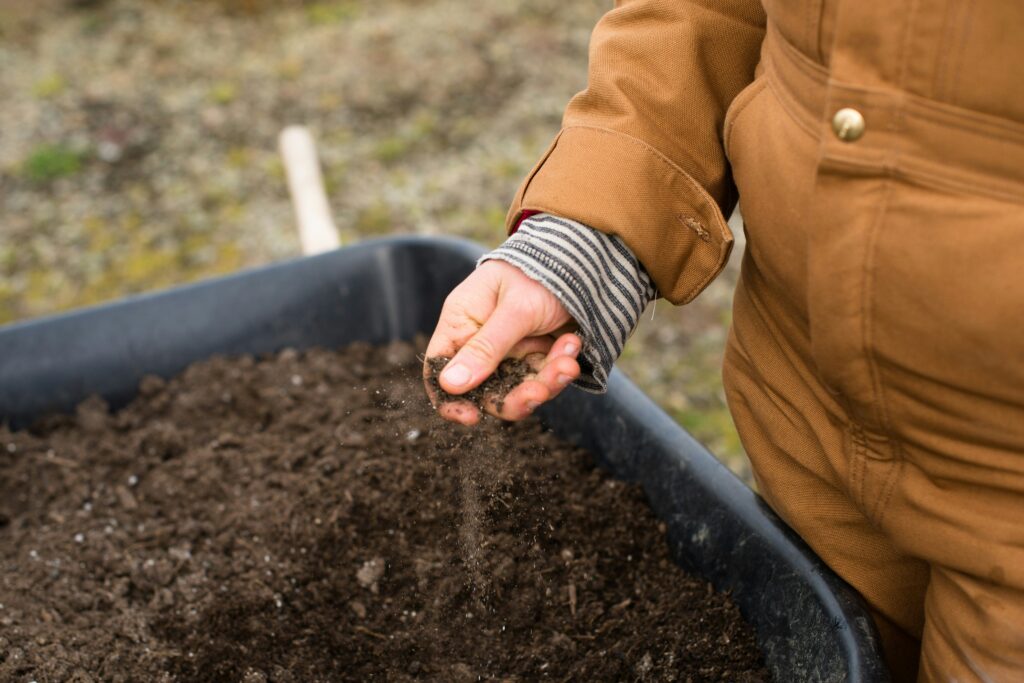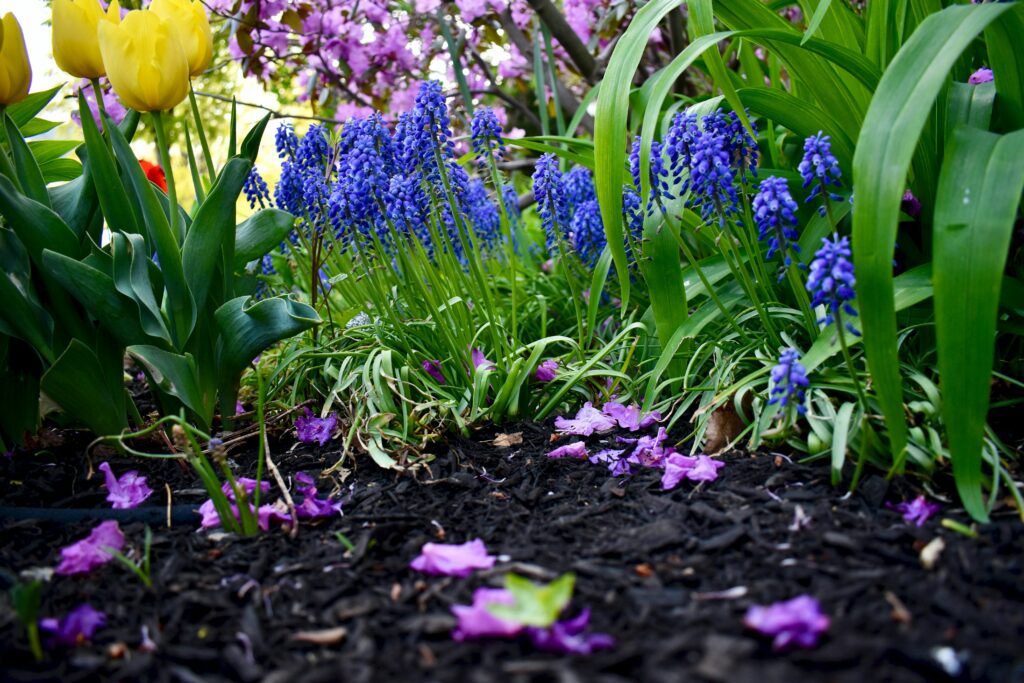Water conservation is an increasingly important aspect of gardening, and one of the most effective ways to achieve it is by using mulch. Mulch not only reduces water loss from soil but also improves soil health, suppresses weeds, and enhances the aesthetic of your garden. Whether you’re a seasoned gardener or just starting, understanding how to use mulch effectively can transform your garden and save you time, effort, and resources.
As an Amazon Associate, I may earn a commission – at no extra cost to you, from qualifying purchases.
Why Mulch Matters for Water Conservation
Mulch acts as a protective layer over your soil, preventing water evaporation, regulating soil temperature, and reducing the need for frequent watering. Here’s why mulch is essential for water conservation:
- Prevents Evaporation: Mulch shields soil from the sun, reducing water evaporation and helping retain moisture.
- Improves Water Infiltration: Mulch slows down water runoff, allowing it to seep into the soil more effectively.
- Reduces Watering Frequency: With mulch, soil stays moist for longer, cutting down on how often you need to water.
- Minimizes Erosion: Mulch keeps soil intact during heavy rains, ensuring water reaches plant roots.
Step 1: Choose the Right Mulch for Water Conservation
1. Organic Mulch
Organic mulches decompose over time, enriching your soil while conserving water. Popular organic mulches include:
- Wood Chips: Ideal for decorative landscapes and pathways. Try USA Pine Bark Mulch for a high-quality option.
- Straw or Hay: Excellent for vegetable gardens and flower beds.
- Grass Clippings: A free and eco-friendly mulch for home gardens.
- Shredded Leaves: Perfect for perennial beds and trees.
- Compost: Doubles as mulch and fertilizer, improving soil structure.
2. Inorganic Mulch
Inorganic mulches don’t decompose and are low-maintenance. Common options include:
- Plastic Mulch: Ideal for vegetable gardens but limits water infiltration. Check out Grower’s Solution Plastic Mulch Film.
- Gravel or Stone: Long-lasting and decorative, often used in drought-tolerant gardens.
- Rubber Mulch: Made from recycled tires, rubber mulch like Rubberific Mulch is durable and eco-friendly.
Step 2: Prepare Your Garden for Mulching
1. Clear the Area
Remove weeds, debris, and any existing mulch to create a clean surface. Weeds compete with your plants for water, so eliminating them ensures better water conservation.
2. Test Your Soil
Healthy soil retains moisture better. Use a soil test kit like the Sonkir Soil pH Meter to assess your soil’s pH and nutrient levels. Amend your soil with organic compost if necessary.
3. Water Thoroughly
Before applying mulch, water the soil deeply. This ensures the soil is moist and ready to retain water under the mulch layer.

Step 3: Apply Mulch Effectively
1. Determine the Thickness
The thickness of your mulch layer depends on the type of mulch and the plants you’re growing:
- Organic Mulch: Apply 2–4 inches for most gardens. For finer mulches like straw or grass clippings, stick to 2 inches to prevent compaction.
- Inorganic Mulch: A 1–2-inch layer is usually sufficient.
2. Avoid the Base of Plants
Keep mulch 2–3 inches away from the base of plants to prevent moisture-related diseases and rot.
3. Spread Evenly
Use a rake or your hands to spread mulch evenly. Ensure a consistent layer to maximize water retention.
Step 4: Maintain Your Mulch Layer
1. Replenish as Needed
Organic mulches decompose over time, so check your mulch layer every few months and add more as needed.
2. Fluff the Mulch
If mulch becomes compacted, gently fluff it with a rake to improve airflow and water infiltration.
3. Monitor Moisture Levels
While mulch reduces watering frequency, your plants still need adequate hydration. Use a moisture meter like the XLUX Soil Moisture Meter to check soil moisture.
Benefits of Mulching Beyond Water Conservation
1. Weed Suppression
Mulch creates a barrier that prevents sunlight from reaching weed seeds, reducing their growth. Fewer weeds mean less water competition for your plants.
2. Soil Temperature Regulation
In hot climates, mulch keeps soil cooler, reducing evaporation. In colder months, it acts as insulation, protecting roots from freezing.
3. Soil Enrichment
Organic mulches break down over time, adding nutrients and improving soil texture.
4. Pest Control
Certain mulches, like cedar chips, have natural pest-repellent properties, helping you maintain a healthier garden.
Using Mulch in Different Garden Types
1. Vegetable Gardens
Mulching vegetable gardens ensures your crops have consistent moisture and reduces stress caused by fluctuating soil conditions. Organic options like straw or compost are best for edible plants.
- Tip: Use biodegradable mulch film, such as BioAgri Biodegradable Mulch Film, for an eco-friendly alternative.
2. Flower Beds
Shredded bark or wood chips enhance flower beds by retaining moisture and adding a decorative touch. Keep mulch light and fluffy to avoid suffocating plant roots.
3. Trees and Shrubs
Apply mulch in a donut shape around the base of trees and shrubs. Avoid piling mulch against the trunk, as this can lead to rot.
4. Potted Plants
Even container gardens benefit from mulching. Add a thin layer of mulch to reduce water evaporation and keep soil temperatures stable.
Tips for Maximizing Water Conservation with Mulch
- Combine Drip Irrigation and Mulch: Pairing mulch with a drip irrigation system, like the Raindrip Drip Irrigation Kit, delivers water directly to plant roots and minimizes waste.
- Choose Light-Colored Mulch in Hot Climates: Reflect heat with light-colored mulches, such as straw, to reduce soil overheating.
- Water Early in the Morning: Watering in the morning reduces evaporation and allows moisture to penetrate the soil before the day’s heat.
Common Mulching Mistakes to Avoid
- Over-Mulching: Too much mulch can suffocate roots and hinder water infiltration.
- Using the Wrong Mulch: Avoid using fresh grass clippings or unprocessed wood chips, as these can deplete soil nitrogen.
- Neglecting Replenishment: Failing to maintain your mulch layer can reduce its effectiveness over time.
Products to Enhance Your Mulching Experience
- Wheelbarrow or Garden Cart: A durable cart like the Gorilla Carts Poly Dump Cart makes it easy to transport mulch.
- Mulch Spreader: The Brinly Tow-Behind Spreader simplifies spreading mulch evenly.
- Mulching Mower: If you prefer to make your own mulch, the Greenworks Cordless Lawn Mower with Mulching Capability is a great investment.
Conclusion
Using mulch to conserve water in your garden is a simple yet powerful strategy for sustainable gardening. By choosing the right mulch, preparing your garden properly, and maintaining your mulch layer, you can significantly reduce water usage while promoting healthier plants. Whether you opt for organic or inorganic mulch, the benefits extend beyond water conservation, improving soil health, suppressing weeds, and enhancing the overall beauty of your garden.
So, grab your tools, choose your mulch, and start transforming your garden into a water-efficient haven today!

